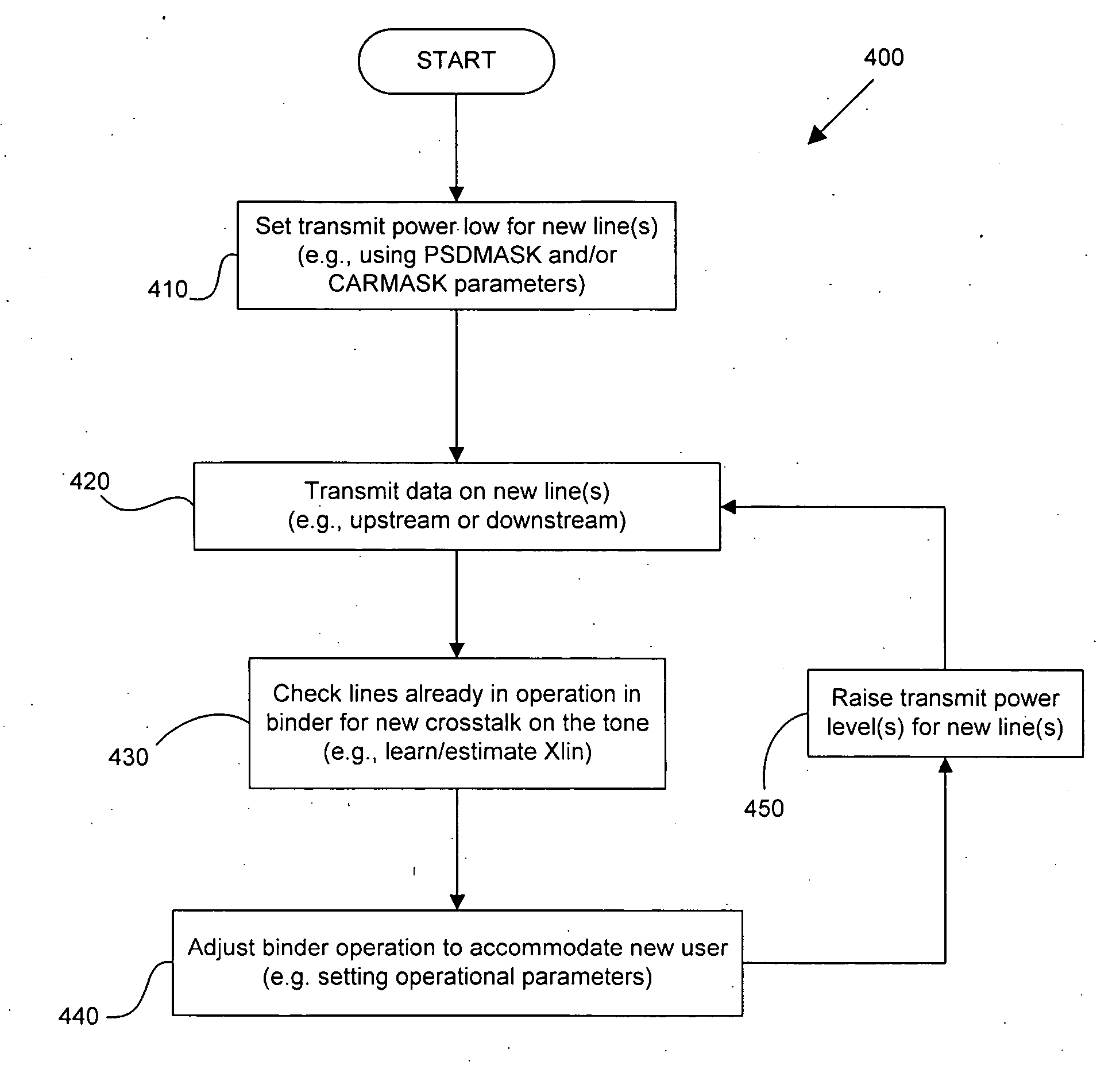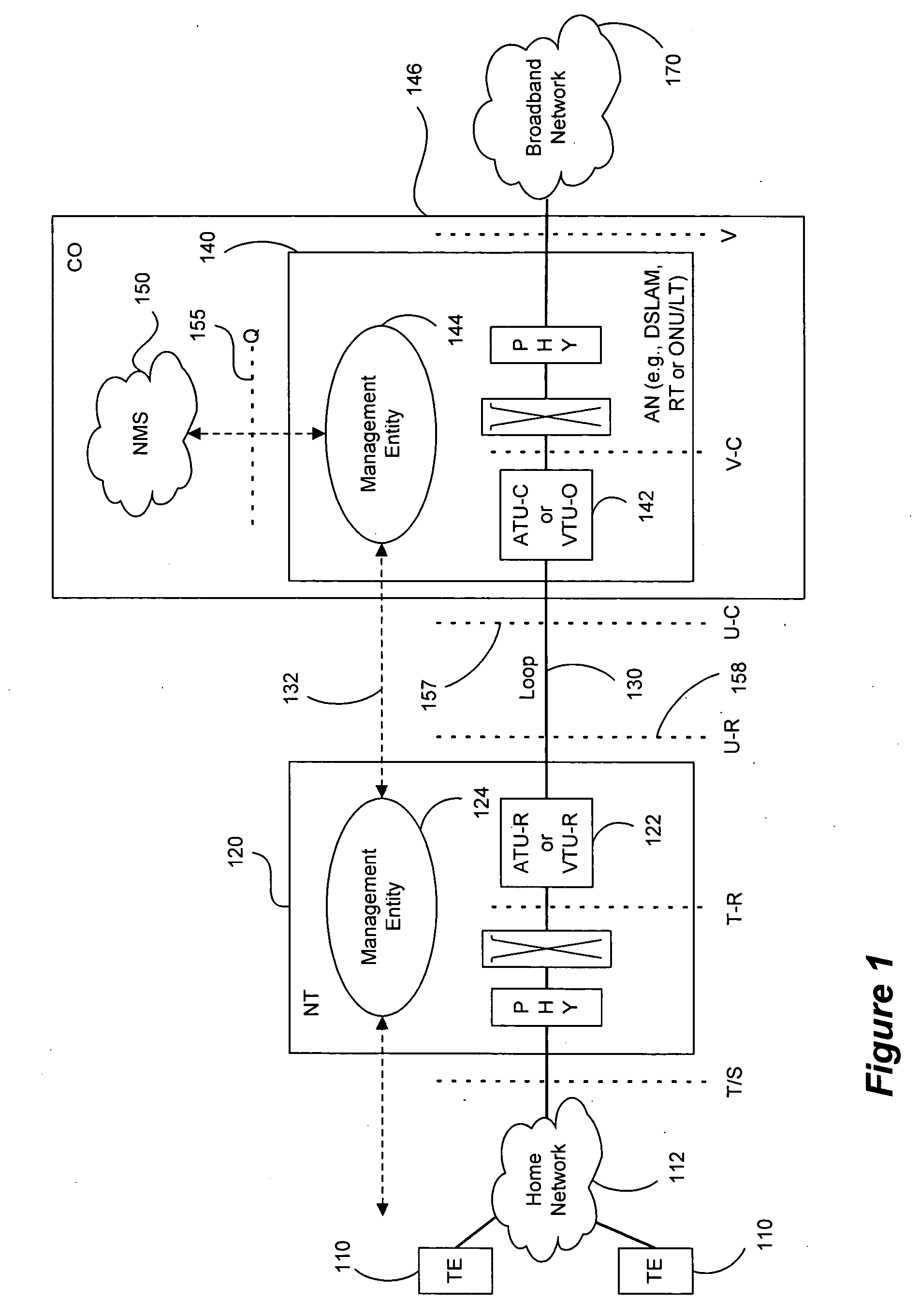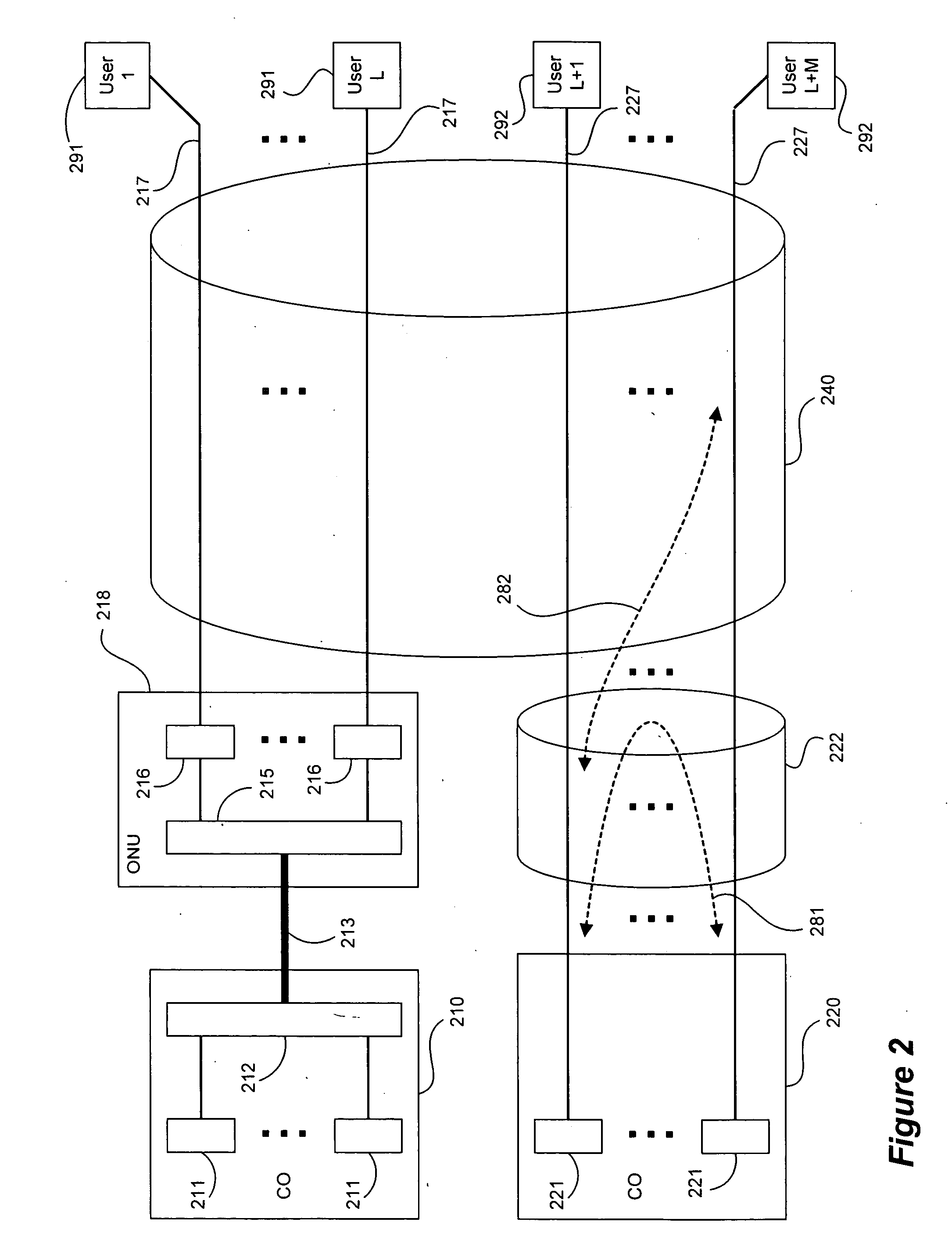DSL system training
a technology of dsl system and training method, applied in the direction of transmission, line-transmission, substation equipment, etc., can solve the problems of affecting the operation of dsl system operation by more new lines
- Summary
- Abstract
- Description
- Claims
- Application Information
AI Technical Summary
Benefits of technology
Problems solved by technology
Method used
Image
Examples
Embodiment Construction
[0026] The following detailed description of the invention will refer to one or more embodiments of the invention, but is not limited to such embodiments. Rather, the detailed description is intended only to be illustrative. Those skilled in the art will readily appreciate that the detailed description given herein with respect to the Figures is provided for explanatory purposes as the invention extends beyond these limited embodiments.
[0027] Some embodiments of the present invention implement methods and apparatus that permit the non-disruptive introduction of a new DSL line into the operation of a vectored and / or non-vectored DSL system. The communication system in which embodiments of the present invention may be used may include ADSL lines, VDSL lines, and / or other communication system components and / or lines with which the present invention is practical, as will be appreciated by those skilled in the art after reading the present disclosure.
[0028] As described in more detail ...
PUM
 Login to View More
Login to View More Abstract
Description
Claims
Application Information
 Login to View More
Login to View More - R&D
- Intellectual Property
- Life Sciences
- Materials
- Tech Scout
- Unparalleled Data Quality
- Higher Quality Content
- 60% Fewer Hallucinations
Browse by: Latest US Patents, China's latest patents, Technical Efficacy Thesaurus, Application Domain, Technology Topic, Popular Technical Reports.
© 2025 PatSnap. All rights reserved.Legal|Privacy policy|Modern Slavery Act Transparency Statement|Sitemap|About US| Contact US: help@patsnap.com



